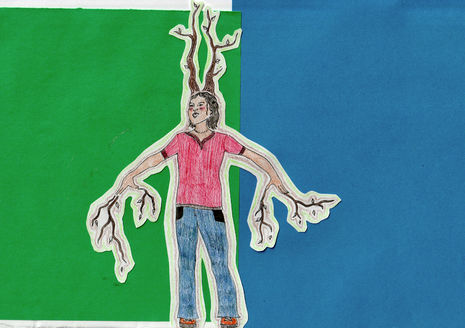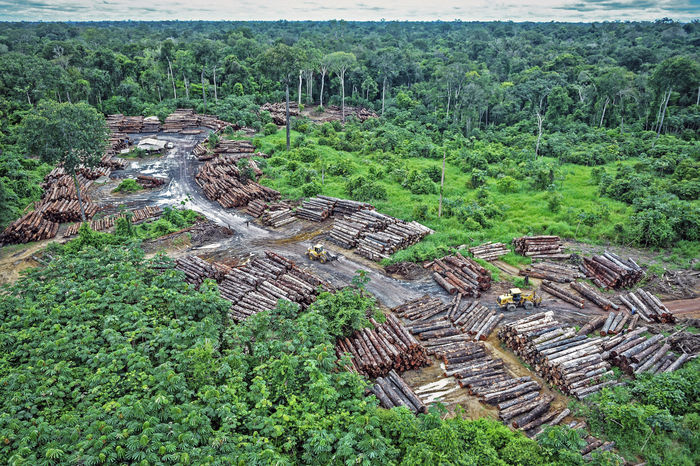Theatre and the environment: rethinking the performative
Margaux Emmanuel explores the notion of “performativity” in the context of theatre being used as a tool for environmental activism.

‘Performative environmentalism’ is a problematic societal phenomenon, corresponding to the known dictum that ‘words don’t equate actions’. It can be argued that all social movements are initially spurred by some form of performativity, but this must be used as an incentive to action, and not as the action itself. However, the term ‘performative’ takes on different connotations when considering theatrical, and not a purely social, performance. The world of the theatrical, in its endless richness and ability to reflect the tensions of society through an artistic prism, contains both the sense of ‘incentive’ in its capacity to move and shock, as well as the capacity of providing a rich reflexion and reconsideration of the panoply of social and environmental phenomena that surround us, especially in our relation and responsibility towards them.
“The visual aspect of theatre is its strength (...) this visuality also encompasses another theatrical idiosyncrasy : bodily presence.”
On the level of the narrative, there are a myriad of works of literature that reflect either the tensions of a capitalist model of nature as an inexhaustible storehouse, as well as the impending threat of environmental catastrophe. Steve Waters’ The Contingency Plan for instance alerts us to the relevance of rising sea levels in Antarctica to the U.K., or Wallace Shawn’s disturbing Grasses of a Thousand Colors portrays scientific genetic modification gone too far through the veil of humour and unsettling erotica. However, as powerful as the storytelling valence of the theatrical performance is, the bodily presence and enactment of these issues is what constitutes these works’ strength. There is a difference between a novel on environmental issues, and a play on environmental issues to the extent that it becomes a ‘meta-action’ – it enacts the step differentiating action from the performative and simply constative written word.
In a different sense is Richard Schechner’s 1960s movement of ‘environmental theatre’, as in the striving for an enhanced awareness of the ‘environment’ of the text, in a way that is close to Brechtian theatre. Schechner demonstrated this with works such as Makbeth and Dionysus in 69. Even though he did not employ the term ‘environmental’ as synonymous to ‘nature’, we can use this theoretical model as an indicator of the heightened consciousness which the theatrical ‘environment’ engenders – whether that be that of the fictional setting or extending this setting in terms of its insertion into a wider social context.
The visual aspect of theatre is its strength, as well as the principal factor that differentiates it from other literary or artistic forms. This visuality also encompasses another theatrical idiosyncrasy : bodily presence. Seeing a theatrical performance is viewing bodies on stage, creating a strong sense of bodily awareness. There are many specific theatrical practices that utilise corporal self-consciousness. For example, Augusto Boal’s Theatre of the Oppressed, an interactive theatrical form elaborated in the 1970s in Brazil, is a theatrical concept born in the context of dictatorial oppression. This functions as a theory that concentrates on the duality of the creation of dramatic meaning through the engagement of the spectator as well as, of course, the actor, blurring the lines between the both of them.
“If we were to take ‘performative activism’ to the stage and develop it, the term ‘performative environmentalism’ could take on a whole new set of connotative meanings.”
The activity of the Theatre of the Oppressed that is particularly apposite when considering activism and, more specifically, green activism, is the concept of image-theatre, which is an activity where one actor acts as a ‘sculptor’ and, without using language, will ‘mold’ the other participants’ bodily expressions, creating a corporal dialogue centered around a common theme. If we were to transpose this theory to an environmental theme, performatively engaging the body in a discussion concerning the ecological crisis could be a way for us to understand our implication in this through the use of concrete, physical symbolism, and also with the corrective aspect of the ‘sculptor’s’ role. The theme could, for example, be ‘deforestation’ and one group of actors could act as trees and the other as saws.
Considering theories such as The Theatre of The Oppressed and the aforementioned image-theatre would be a key technique where ‘performative activism’ takes on a different, positive meaning. This could especially be useful with children in schools in order to raise awareness in an interactive, pedagogical way, and also to jolt us all into action, creating a sense of urgency in the body itself. The dialogue and stage directions of a play aren’t speech acts; they themselves constitute the alerted body navigating a world that demands action. If we were to take ‘performative activism’ to the stage and develop it, the term ‘performative environmentalism’ could take on a whole new set of connotative meanings.
If you liked this article, why not sign some of these petitions or join some of these initiatives to help further the fight against climate change?
There are many important ones here:
https://www.change.org/t/environmental-protection-en-us
Protect WA’s South West Forests:
https://waforestalliance.good.do/forestsforclimate/forestsforclimate/
Protect the Oceans- Global Ocean Treaty at the UN:
https://www.greenpeace.org/international/act/protect-the-oceans/
Protect the Arctic:
http://www.protectthearctic.org/take-action-to-protect-the-arctic-national-wildlife-refuge
Look into:
https://together4forests.eu/about
Join the fight!
https://www.wwf.org.uk/fight-climate-change
 News / Cambridge academics stand out in King’s 2026 Honours List2 January 2026
News / Cambridge academics stand out in King’s 2026 Honours List2 January 2026 Interviews / You don’t need to peak at Cambridge, says Robin Harding31 December 2025
Interviews / You don’t need to peak at Cambridge, says Robin Harding31 December 2025 Comment / What happened to men at Cambridge?31 December 2025
Comment / What happened to men at Cambridge?31 December 2025 News / Varsity’s biggest stories of 202531 December 2025
News / Varsity’s biggest stories of 202531 December 2025 Features / “It’s a momentary expression of rage”: reforming democracy from Cambridge4 January 2026
Features / “It’s a momentary expression of rage”: reforming democracy from Cambridge4 January 2026










